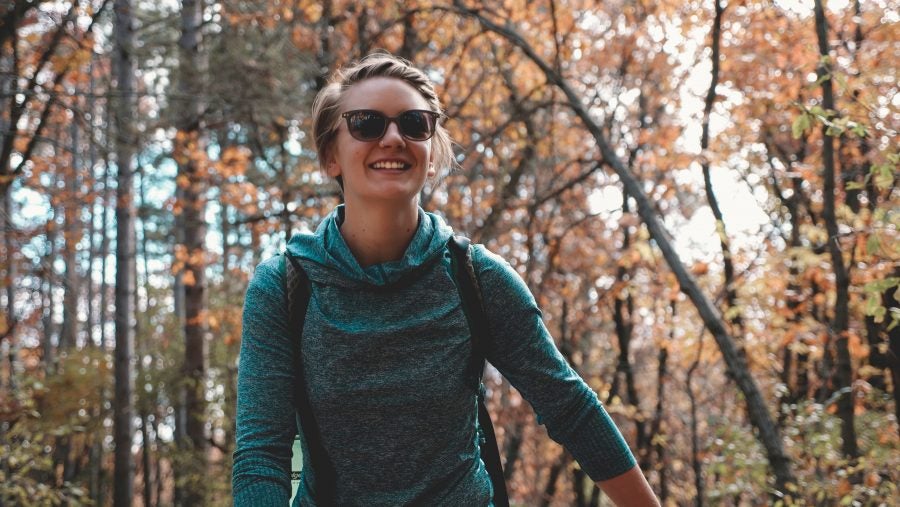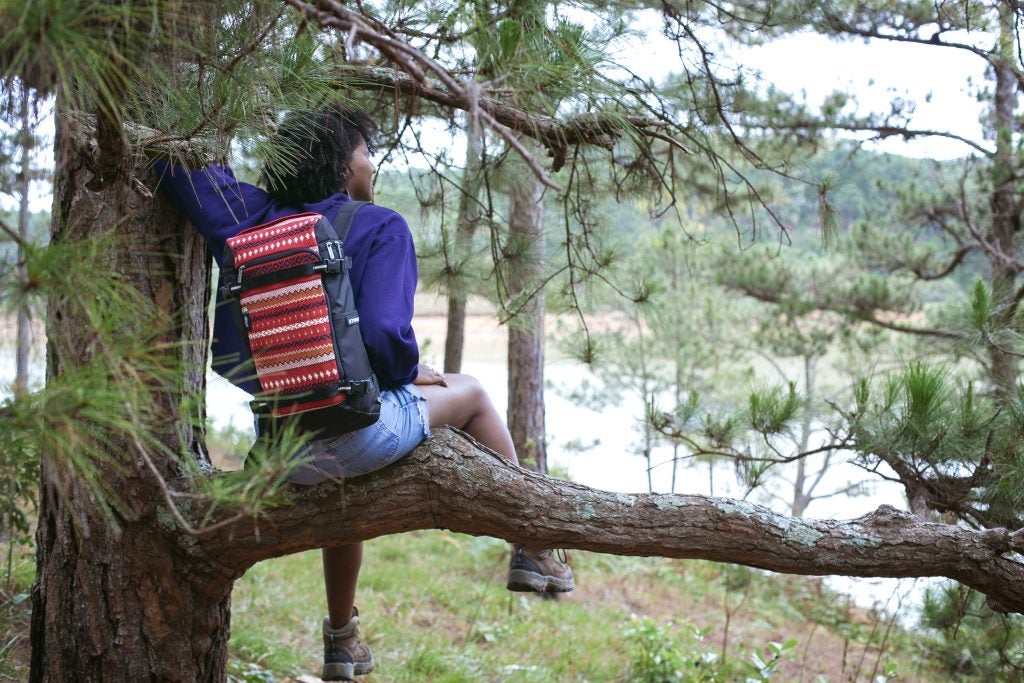This story is brought to you by our friends at Vivobarefoot. On any trail, in any climate, their ethical shoes allow you to connect with the ground beneath your feet. Sight isn’t the only way to embrace the landscape, and Vivobarefoot gives you an even deeper experience with the ground you cover.
Have you heard about braille trails? They were invented in 1967 by an Aspen, Colorado science teacher who recognized the need for trails that made nature accessible to those with visual impairments. Soon, braille trails were developed from coast to coast, in various states including Arizona, New Jersey, Arkansas, and Hawaii. The specific features and experiences found on braille trails are all different, offering a variety as diverse as the people who enjoy and benefit from them.
Some braille trails are small and simple to navigate, focusing mainly on trees, shrubs, flowers, water features, walking surfaces, and benches that give the visually impaired a chance to feel, hear, and smell their way along the trail. Others are longer and similar to the trails those without seeing impairments are used to. They might feature signage in braille explaining the features or history of the surrounding area. Some braille trails have special pathways that are easy to navigate. Others have uneven surfaces and some roots, and might be best navigated with a companion.
However you go and whatever your abilities, know that these trails are a treat for anyone who loves nature.
The Aspen Braille Trail, CO
The original Braille Trail that started them all, Aspen’s route has a variety of features designed with the visually impaired in mind. A rope follows the edge of the trail for those who prefer to feel their way along. There are also markers in braille for a quarter mile. The route follows a stream, and hikers will encounter a variety of plants growing nearby.
As Trends in Parks and Recreation wrote in 1968, “To touch the bark of the various fir trees of the forest and smell the wild flowers in bloom and then to pass on down the path to the edge of the stream at one’s own pace, is truly a meaningful experience. The feel of bark, leaves, flowers, ferns, mosses and lichens each has its story to tell.”
Trail of the Senses, CT
Built in 2013 in the White Memorial Conservation Center, Trail of the Senses is short but chock full of things to experience. The trail is designed to “…encourage you to smell scents in the air, feel changes in the ground, and take part in other sensory activities in order to discover the natural world.” If you don’t have foot or mobility issues, this is a great trail where visitors can experience the terrain, feeling for changes that might be challenging or exciting. The area is also a big birding habitat, so look forward to the trills and whistles of New England’s favorite warblers.
Related Reading:
Slacklining Is Catching On At Campgrounds: Here’s What You Need to Know
The Fern Trail, WI
Located in Newport State Park, Wisconsin, the Fern Trail is over a mile long and is unique in its inclusion of electronic guides to help visitors navigate the route. “Hand-held audio discovery pens” link up to stations along the trail, offering information and instructions on how to interact with interpretive exhibits. There are clay sculptures to feel, ferns to pet, and even bird eggs to touch. The trail ends near a lake. The whole thing is paved in limestone, making it easier to navigate. If you want to continue the journey beyond the accessible section, you have the option to join the Lynd Point Loop after the interpretive elements end. All told, the park boasts 8 miles of accessible and interpretive trails, including some that are paved for those with mobility related disabilities.
The Lion’s Tail Trail, VA
Along Passage Creek, hikers can enjoy the scent of sassafras and birch trees as they move through a lovely George Washington & Jefferson National Forest. Interpretive signs offer information on natural formations along the way, like how water shapes the river stones, and local flora and fauna. In places where the terrain is uneven, a wooden boardwalk keeps the trail level. That’s not the only aspect of this trail designed with wheelchair users in mind— one spot makes it easy for those with mobility challenges to dip their toes in the water. This is half a mile where people of all abilities and all ages can enjoy what Shenandoah has to offer.
Braille Trails Throughout the U.S.
There are many more braille trails around the U.S. and the world, as well as sensory gardens that are focused less on walking in nature and more on what can be touched, smelt, and heard in a smaller space. These are just a few that are making the outdoors more accessible and serve to remind us that there are ways to experience nature.
When we truly focus on the world around us — the bird calls, the movements of the wildlife on the shore and in the water, the scent of wildflowers, the brush of grass on our legs, the texture of the earth under our feet — we come to understand a place on an entirely new level. Whether or not you have visual impairments, braille trails put an emphasis on experiencing elements of nature that go beyond the splendid views.
If there isn’t one near you, or if you’d like to make every trail you hit have a little of the braille trail sensory experience, you might consider minimalist footwear, like Vivobarefoot’s Primus Trail Shoe, that give you the feeling of being barefoot and let you really feel the texture of the earth under your feet and engage with the ground in a whole new way.
You can win free gear from Vivobarefoot and 19 other brands by reviewing campgrounds on The Dyrt. Share past camping experiences, photos, and videos to earn points towards monthly prizes in The 2018 Great Camping Giveaway!
The Dyrt is the only camping app with all of the public and private campgrounds, RV parks, and free camping locations in the United States. Download now for iOS and Android.Popular Articles:
Articles on The Dyrt Magazine may contain links to affiliate websites. The Dyrt receives an affiliate commission for any purchases made by using such links at no additional cost to you the consumer.



